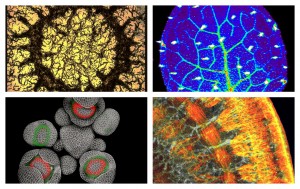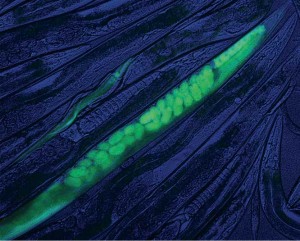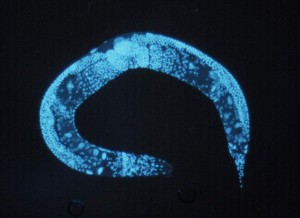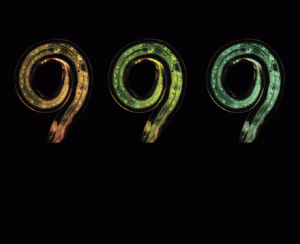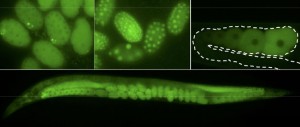Enter your address to receive notifications about new posts to your email.
Articles tagged Caenorhabditis
(44 results)
-
GSA members submit winning entries in FASEB BioArt competition
GSA members are well represented among the winners of FASEB’s fourth annual BioArt competition: 4 of the 11 winning images were submitting by our members. The BioArt competition seeks to share the beauty and excitement of biological research with the public by featuring captivating images and illustrations that represent cutting-edge life science research. All winning…
-
New Faculty Profile: Jagan Srinivasan
New Faculty Profiles showcase GSA members who are establishing their first independent labs. If you’d like to be considered for a profile, please complete this form on the GSA website. Jagan Srinivasan Assistant Professor (since 2012) Department of Biology & Biotechnology Worcester Polytechnic Institute Lab website Research program: Social species form organizations that…
-
New Faculty Profile: Annalise Paaby
New faculty profiles showcase GSA members who are establishing their first independent labs. If you’d like to be considered for a profile, please complete this form on the GSA website. Annalise Paaby Assistant Professor, School of Biology Georgia Institute of Technology Research program: My lab explores major questions in evolution and quantitative genetics.…
-
Worm CRISPR Workshop at the International C. elegans Meeting
Technical tips and progress on worm CRISPR/Cas9 genome engineering Today’s guest post was contributed by Mike Boxem, Daniel Dickinson, and Alexandre Paix. Mike Boxem is a group leader at Utrecht University. His interests include technology development, systems biology, and cell polarity. Daniel Dickinson is a postdoctoral research fellow at the University of North Carolina. His interests include…
-
“The Worm Conference”: from the bonds of many droplets, a mighty river roars…
Today’s guest post is contributed by Todd Plummer, a Research Associate in Gordon Lithgow’s lab at the Buck Institute for Research on Aging. Todd is a certified California Naturalist interested in the ecological relationships that affect wild strains of worms used as model organisms. Follow him on Twitter: @plumtodd This post first appeared on SAGE, a blog focused on the science…
-
The beauty and humor of the worm
Today’s guest post is authored by Diana Chu and Ahna Skop and features artwork from the Worm Art Show, recently held at the GSA-sponsored 20th International C. elegans Meeting in Los Angeles. Diana Chu is an Professor of Biology at San Francisco State University and Ahna Skop is an Associate Professor of Genetics at the…
-
The Importance of Community
Today’s guest post is by Tiffany Timbers, a neurogenomicist at Simon Fraser University. Follow her on Twitter: @TiffanyTimbers. This post about the Genetics Society of America 20th International C. elegans Meeting first appeared on Tiffany’s blog and is republished here with her permission. I just recently returned home from the 20th International C. elegans Meeting at UCLA.…
-
Worm101: Caenorhabditis elegans educational Primer
In time for the 20th International C. elegans Meeting, GENETICS has published the next in its series of model organism education Primers. Ann Corsi, Bruce Wightman, and Marty Chalfie introduce Caenorhabditis elegans and the many features that make it an outstanding experimental system. The authors describe the basic biology, genetics, anatomy, genomics, ecology, and evolution…
-
Mutant Screen Report: touchy worms
Do you have results from a mutant screen to publish? G3’s Mutant Screen Reports allow you to publish succinct descriptions of useful genetic screens in a convenient format. The Reports fulfill one of G3’s goals: to make data from screens available to the community in a timely fashion. If you gently touch the front half…
-
CRISPR Cleans Up
A versatile new CRISPR/Cas9 genome editing strategy allows mutation, tagging, and gene deletion in C. elegans without the use of co-integrated markers or long homology arms, report Paix et al. in an article published Early Online in GENETICS. The strategy can be easily scaled up, and should allow systematic construction of precise ORF deletions and…
-
Turning to the Worm
When Scott Alper and colleagues looked for candidate regulators of mammalian innate immunity based on gene expression data, the hit rate was only around 2%. By using a comparative genomics approach — starting with an RNAi screen in Caenorhabditis elegans — their hit rate rose to nearly 30%. In a new GENETICS article, published as…

